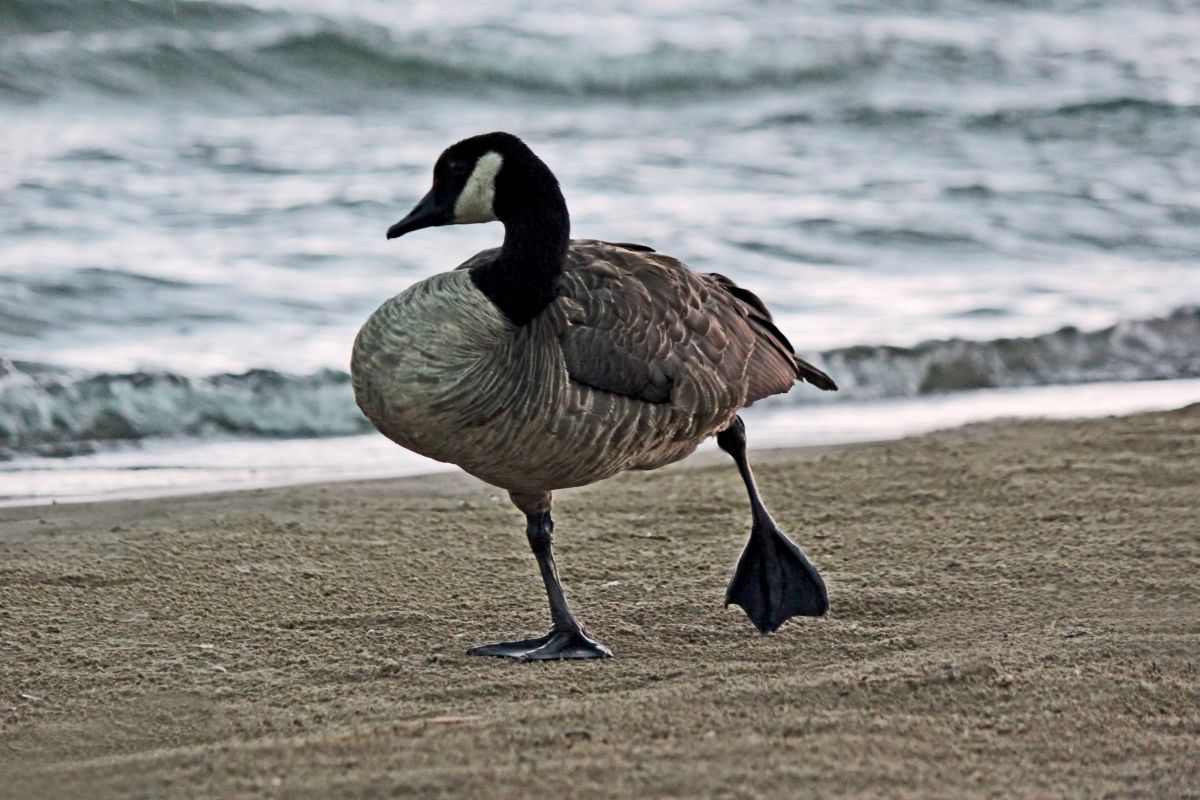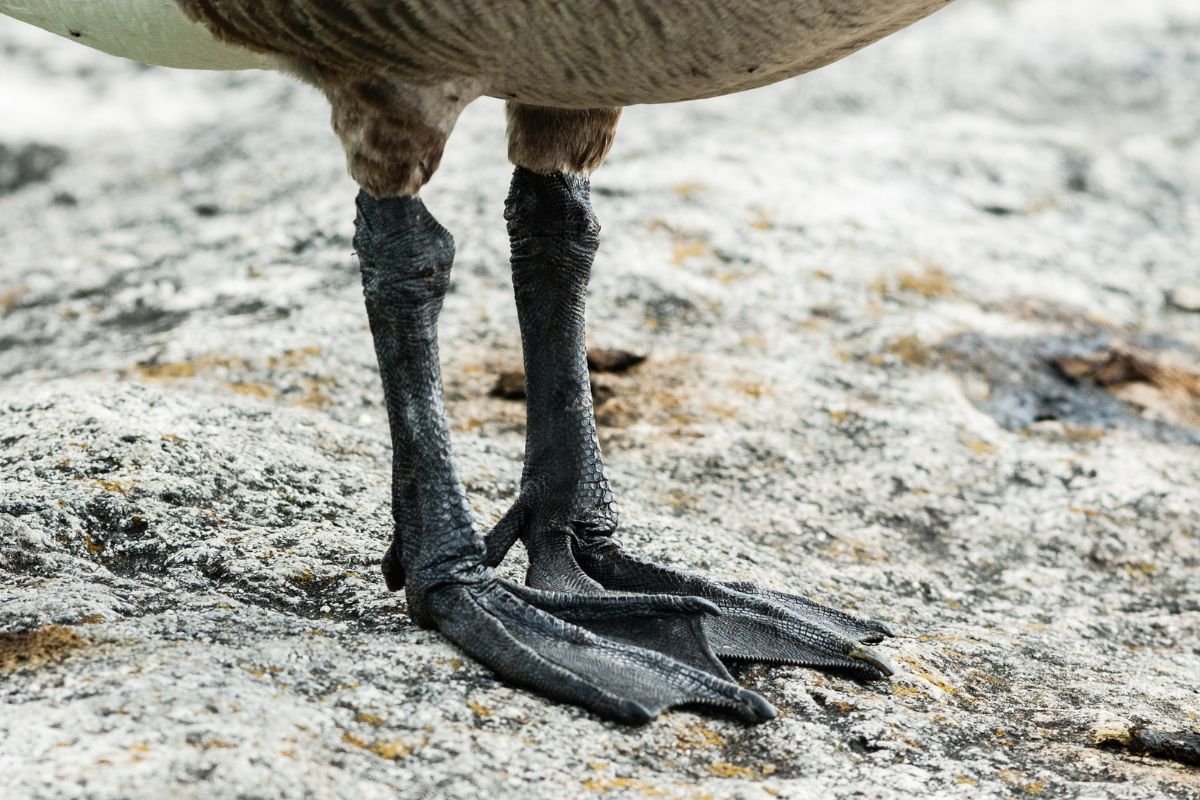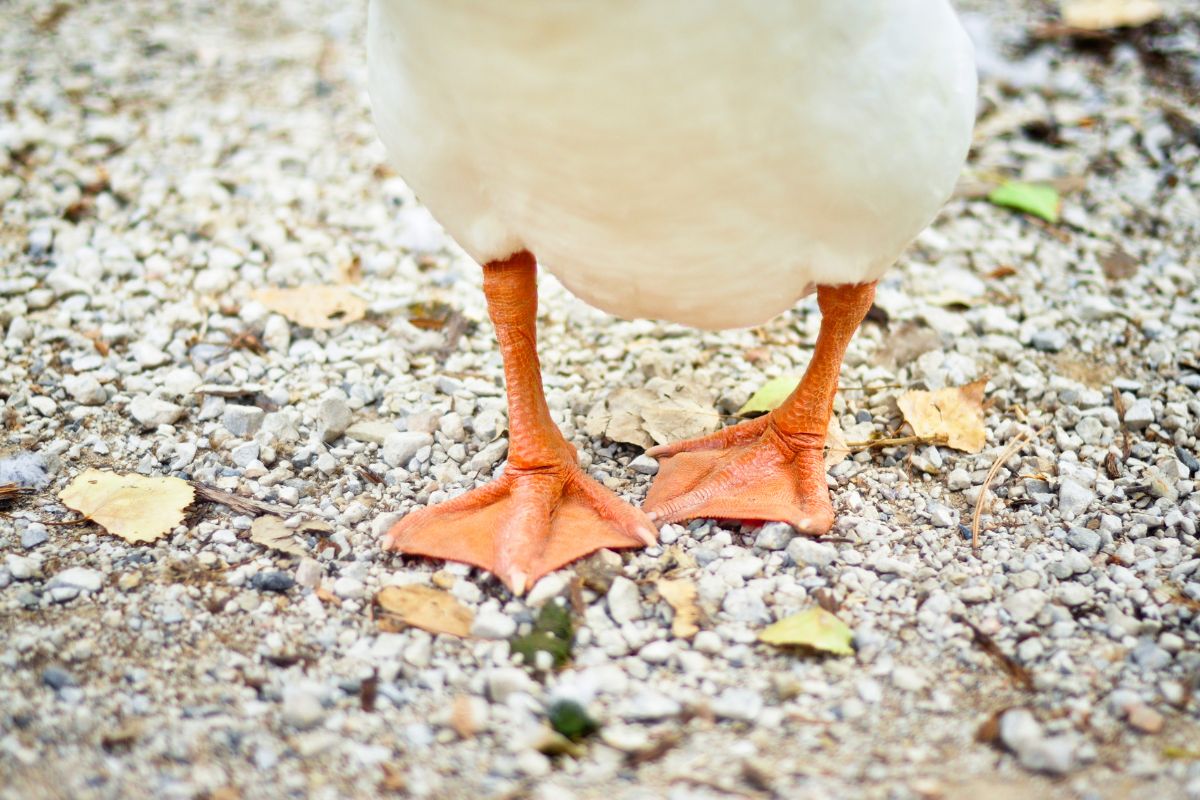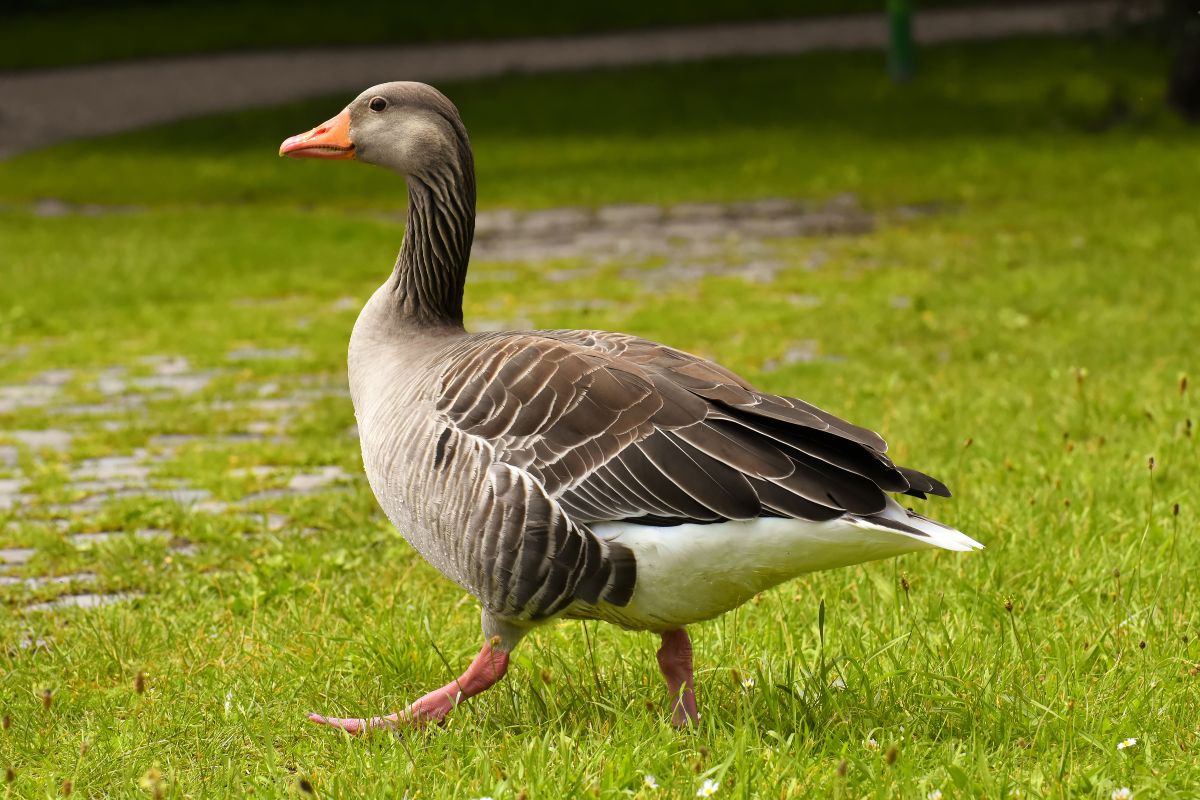Do you own geese, or maybe you just find them fascinating? Geese and other birds have an interesting history that’s not discussed often. They evolved to do specific activities that they’re now excellent at, and a large part of that is thanks to their feet. Here’s everything you need to know about goose feet.

Contents
What Is a Goose?
A goose is a large, heavy-bodied bird that’s a member of the family Anatidae, which is made up of two genera: Anser and Branta. Geese fit between ducks and swans in their size and build. They live in flocks called gaggles that follow a hierarchy of leadership.
Males and females are similar in color. However, males are typically larger than females. Geese mate for life. They build nests on the ground because they don’t have vertical flight like chickens and migrate south during the winter. These waterfowl can live between 10-15 years in the wild.
What Do Goose Feet Look Like?
Geese have palmate feet, which means they have three webbed front toes and a hind toe that’s small and elevated. Short toenails cap their large webbed toes. They actually developed webbing on their feet over time as they adapted to their surroundings.
Geese have more prominent webbing than some other birds, and their legs are taller in proportion to their bodies than others, too.
What Do Geese Use Feet For?

Geese use their feet for many activities, but the two most important ways are locomotion and thermoregulation. Locomotion includes movements such as walking, swimming, and flying. Thermoregulation is how they maintain their body temperature.
Geese can swim remarkably quickly and well in the water thanks to their webbed feet. They can create both lift and thrust while swimming by pushing downward and backward with each stroke.
As for flying, geese use their feet in interesting ways. When in flight, their webbed feet act like rudders on a boat to help them steer. Then, during landing, they act like flaps on a plane to create extra drag and help them land. On the other hand, they pull their feet up when they want to fly faster.
The legs of geese, and other waterfowl, use an interesting heat-exchange process called the counter-current circulation system that lets very little heat escape.
Their arteries and veins work together to retain heat by sharing it as they flow in opposite directions to each other. This is especially impressive when you consider that their large, flat feet naturally radiate heat.
How Do Goose Feet Differ from Other Birds’ Feet?
Geese are pretty similar to both ducks and chickens in many ways. Their feet are relatively similar, too, but evolved to achieve slightly different things.
Chicken
Chicken feet also have three front toes (aside from a select few breeds, which have four) and a fourth hind toe that’s smaller and elevated. They never developed webbing on their toes because they didn’t need to. They have longer, larger nails that they use to forage and scratch with.
Ducks
Ducks have very similar feet to geese, but their webbing is just not as prominent. Their legs are also farther back on their bodies to better help with diving. Unlike chickens, neither ducks nor geese use their feet to forage.
Common Goose Feet Problems

Here are some of the most common goose feet problems.
Scaling Mites
Geese’s legs can become infected with parasitic mites that will feed on their blood. Raised scales, red patches, and even the mites themselves are evidence of an infection.
Overgrown Nails, Cuts, or Bleeding
Geese that live in pens don’t walk as often as wild geese, so they don’t naturally file their nails by walking. As such, they require regular trimming as well as monitoring for any cuts or signs of bleeding and similar issues.
Fowl Cholera
Fowl Cholera, or Pasturella, is an infectious avian disease that’s caused by bacteria. Some of the most common symptoms include loss of appetite, increased thirst, green droppings, lack of movement, and death.
Bumblefoot
Bumblefoot is also known as swollen feet because it makes their feet swell. It’s the result of Staphylococcus (Staph) bacteria infecting them through an injury.
Niacin Deficiency
Geese need a high concentration of a vitamin called niacin in their food. It helps with development, so if they don’t have enough, it can lead to bow-shaped legs, swollen leg joints, and stagnant geese in the flock.
Worms
Some parasitic worms like nematodes or Platyhelminthes restrict a goose’s movements.
Mycoplasma synoviae
This is a disease that will make a goose’s legs hot and swollen. It’ll also cause touching their legs painful for the geese.
Conclusion

Goose feet are more than just adorable and good for waddling around. They’re versatile and incredibly useful to geese, whether on the ground, in the air, or in water. Their feet also keep their body temperature regulated. Hopefully, the above information has helped you better understand goose feet and sparked your interest in learning more about these beautiful birds.
